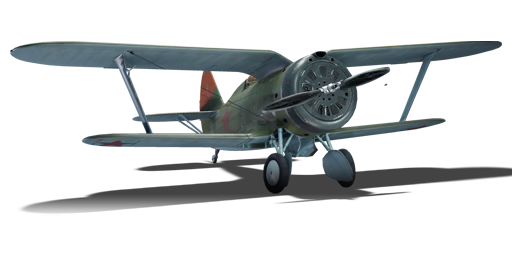



The I-153 M-62 Chaika is a further development of the I-15 family of biplanes, conceptualized after experience during the Spanish Civil War led the Soviet high command to believe in the need of more modern biplanes in service. The Chaika included several modern features that significantly improved its performance, namely a retractable undercarriage, upgraded armaments to faster-firing ShKAS machine guns, and a "gull wing" sesquiplane design that improved the overall aerodynamic qualities. While the Chaika proved to be a formidable fighter during the early stage of the war, being capable of going toe-to-toe with the Japanese Ki-27 during the Battle of Khalkin Gol, it was plagued with engine reliability problems and its poor fuel fire damage resistance that often left the pilot at risk of immolation. Several attempts were made to iron out the problem with the Chaika during the beginning stage of the war in Europe, but was deemed fruitless. With the advent of more modern and capable monoplanes, the Chaika was gradually phased out of the service and relegated to light attack aircraft.
In the game since the start of the Open Beta Test prior to Update 1.27, the Chaika is arguably one of if not the best biplane fighters in War Thunder, with incredible manoeuvrability and blistering ShKAS machine guns. The plane can out-turn and out-roll any monoplanes in the game, and features excellent ground and air attack capability. This extreme characteristic allows the Chaika to easily went toe-to-toe with more advanced fighter and gives them a tough dogfight. However, the Chaika still retains the drawback of a biplane of poor top speed and durability that would leave it helpless if the pilot did not pay an attention to the surroundings. With understanding of the strength and weakness of the Chaika, one can push this humble biplane to its fullest and defeating even the much faster and heavier-armed planes at higher ranks.
flaps
flaps
flaps
brake
| Belt | Belt filling | Armor penetration (mm) at a distance: | |||||
|---|---|---|---|---|---|---|---|
| 10 m | 100 m | 500 m | 1000 m | 1500 m | 2000 m | ||
| T/Ball/Ball/AP-I/AI | 13 | 12 | 7 | 3 | 2 | 0 | |
| AP-I/AI/API-T | 13 | 12 | 7 | 3 | 2 | 0 | |
| AP-I/API-T | 13 | 12 | 7 | 3 | 2 | 0 | |
| AP-I/AP-I/AP-I/AI | 13 | 12 | 7 | 3 | 2 | 0 | |












Flight performance | |
|---|---|
Survivability |
|---|
Weaponry | |
|---|---|